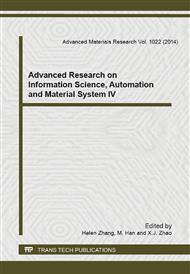p.207
p.211
p.215
p.219
p.223
p.229
p.233
p.237
p.241
Applied Technology in a Developed Simulation Model of Pedestrian Crowd Dynamics during Emergency Evacuation
Abstract:
In this paper, we present a developed cellular automata model to simulate the pedestrians’ crowd behaviors in congested public facility during emergency evacuation. Pedestrian perception and choice behavior considering the queue time of door changing were investigated in pedestrian decision and evacuation time. The model was used to mimic the emergency evacuation with a range of densities for the study of relationship between individual behavior and evacuation time. The results indicate that pedestrian is sensitively for the queue time and prefer to change the exit if the evacuation time perceived by the pedestrian is large then other exit during the escape process. The model is useful to study the pedestrian’s behavior during the emergency evacuation, and helpful for safe layout of the public facilities.
Info:
Periodical:
Pages:
223-228
Citation:
Online since:
August 2014
Authors:
Price:
Сopyright:
© 2014 Trans Tech Publications Ltd. All Rights Reserved
Share:
Citation:


